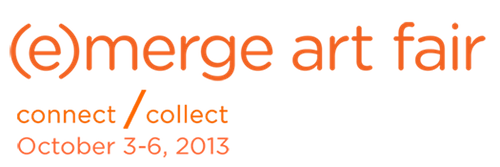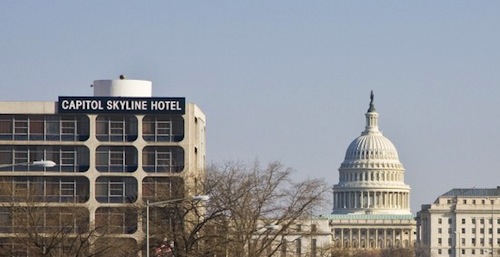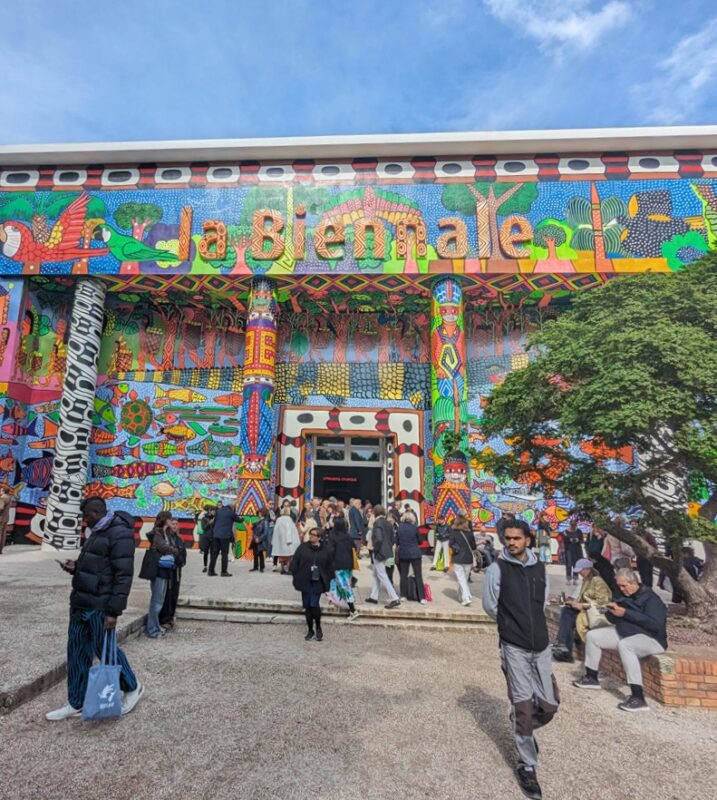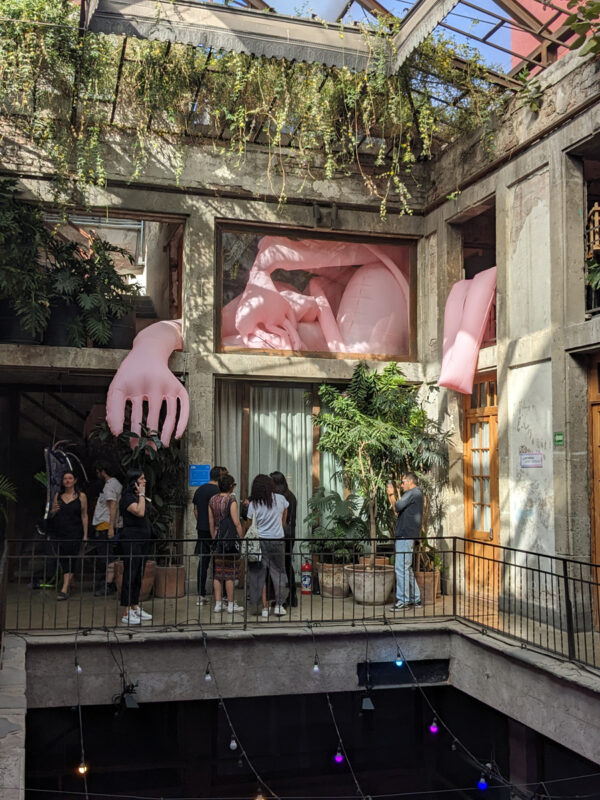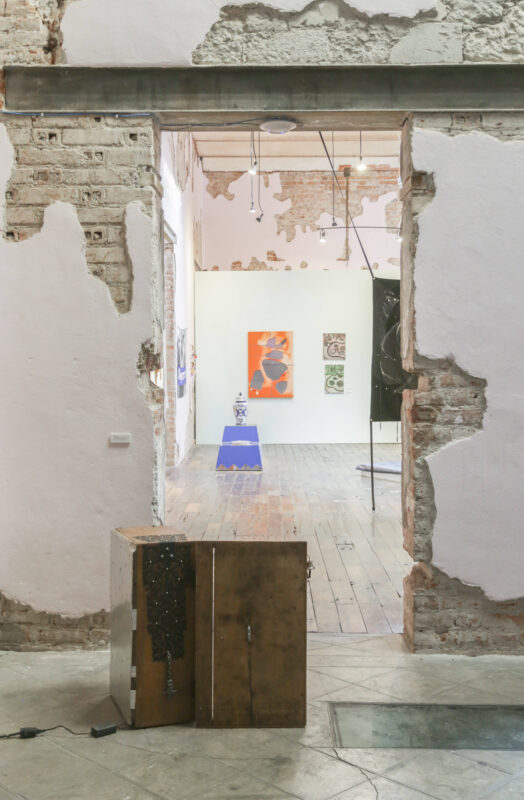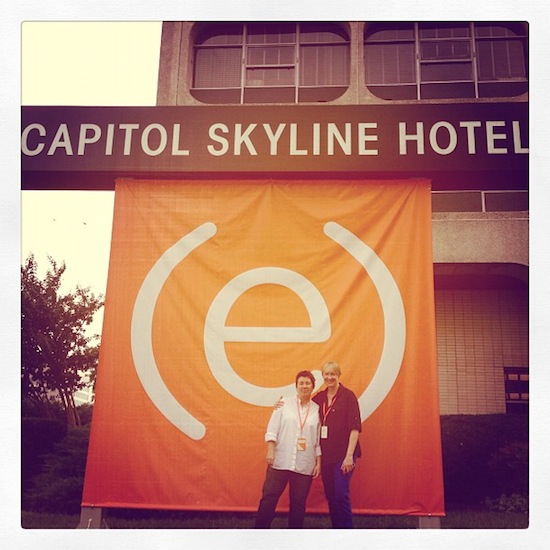 On the eve of the (e)merge art fair‘s third incarnation, I had a conversation with Dr. Jamie Smith, one of the founders of the fair and an owner of CONNERSMITH gallery in Washington, DC. According to Smith, this year’s fair will be bigger, better, more international, more experimental, and more balanced. Read our interview below to get the specifics.
On the eve of the (e)merge art fair‘s third incarnation, I had a conversation with Dr. Jamie Smith, one of the founders of the fair and an owner of CONNERSMITH gallery in Washington, DC. According to Smith, this year’s fair will be bigger, better, more international, more experimental, and more balanced. Read our interview below to get the specifics.
Cara Ober: (e)merge is turning three! Congratulations! What lessons have you learned from the first two fairs in 2012 and 2011? How will the third (e)merge art fair be different or improved from the first two?
Jamie Smith: Yes, Leigh and I are thrilled that the third (e)merge art fair is only days away! The new roster of exhibitors is our most international line-up to date. We will present works by over 150 artists from 30 countries. To encourage participation by artist-run spaces in Baltimore and D.C., we added a special section in the garage, where exhibitions will be presented by Print/Collect, sophiajacob, Pleasant Plains Workshop and Animals & Fire. This year, we’ve planned even more performances and art actions to occur all over the hotel throughout the four days of the fair. We are also delighted that the Washington Post is the presenting sponsor for the (e)merge panel discussions on Friday and Saturday at 2pm.
CO: In your opinion, how has your goal – to include unrepresented and emerging artists – affected the success of (e)merge? This is a significant, and even altruistic, difference from other art fairs and seems to give (e)merge an academic purpose, in addition to (or instead of) a monetary focus. Is this at odds with the traditional goal of an art fair?
JS: (e)merge is the only fair that gives free exhibition space to independent artists. A focus on artists may seem to be at odds with traditional art fairs, but, historically it is not. The first permanent facilities for an international art fair were built in Antwerp around 1480. At that time, galleries did not exist. Artists rented the stalls and the fair served as an extension of their ateliers. So, really, the (e)merge artist platform is a radical paradigm that stems from the very origins of the art market. One impetus behind (e)merge is to get artists more involved in fairs, whether they currently have gallery representation or not. Because many artists today can’t afford to pay for exhibition space, we give those whose projects are vetted into the fair the opportunity to exhibit free of charge. I think this aspect of our fair model contributes to (e)merge’s success because it makes (e)merge unique among contemporary art fairs and art supporters in the D.C.–Baltimore region appreciate the philanthropic quality of our mission.
CO: CONNERSMITH, the gallery that you own, has participated in a number of international art fairs for many years. What are your favorite fairs to be a part of and why? In your opinion, why are art fairs such an important part of a commercial gallery’s agenda? What benefits, besides economic, come from participating?
JS: Art fairs have been a major element of CONNERSMITH’s business model for over a decade. There is no better way to engage with the global art world, which changes minute by minute, network, and present artists’ works to new audiences. We have exhibited at art fairs in Baltimore, Washington, D.C., Miami, Chicago, Mexico City, London, Turin, Brussels, Basel, Barcelona and Madrid. Each event has its own strengths, but some favorites are: Art Miami/Context; The Armory; Volta New York; Volta Basel; and Art Brussels.
CO: Of the total of participants, what percentage of galleries are local – from the Baltimore / DC area? Do you have a preferred ratio of local to non-local participants in the fair? This year you have 80 exhibitors presenting works by 150 artists from 30 countries. What about the unrepresented artists? Are they mainly local or international?
JS: We love the synergy between regionally and internationally based exhibitors at (e)merge. It’s more of an art than a science, so there’s no fixed ratio. This year, we’ve got an exciting mix in the gallery platform, with roughly a third from the D.C.-Baltimore area, a third from other U.S. cities (including Los Angeles, Chicago and New York); and a third from European cities (including Berlin, Milan, Paris, Amsterdam, London and Brussels). About half of the artist platform exhibitors are from the D.C.-Baltimore region and the rest are nationally and internationally based. We are very pleased to welcome artists from Australia, Austria, Brazil, Finland, France and Qatar, among other places!
CO: Now that (e)merge is turning three, the process must be growing at least slightly familiar. Are there certain events or traditions from past years that you are looking forward to? What are you most excited about?
JS: The opening night concert by the pool on Thursday, Oct. 3 is a real highlight. Maimouna Yossef, an inspiring singer who was born in Baltimore, is performing a live set and John Thornley of U.S. Royalty is doing a DJ set. It’s going to be a fun night, so don’t miss it! We’ve also got two great panel discussions lined up for 2pm on Friday and Saturday, as well as dozens of performances, and hundreds of works of art to view.
CO: Do you think that (e)merge will always be based in Washington, DC or do you think it has the potential to be relevant in other locations? Why is this fair a good fit for DC? What does it indicate about the current state of the arts in the nation’s capital?
JS: (e)merge is a good fit for the D.C./Baltimore area because of the region’s deep commitment to supporting art and its financial capacity to make a difference. There is no other audience like this in the world. I believe the next great generation of art supporters is forming here in the national capital region. I definitely think (e)merge’s innovative model has the potential to be relevant in other strong regional markets, in the U.S. or abroad, where there are high levels of community support for emerging art.
CO: Advice to artists: Do you think artists should attend art fairs? Why or why not?
JS: Yes, I encourage artists to enjoy seeing art, meeting people, and networking at art fairs! To get more background information on the (e)merge fair, head to the official fair website or read the Bmoreart/Urbanite interview with Jamie Smith two years ago, just before the first fair launched. 